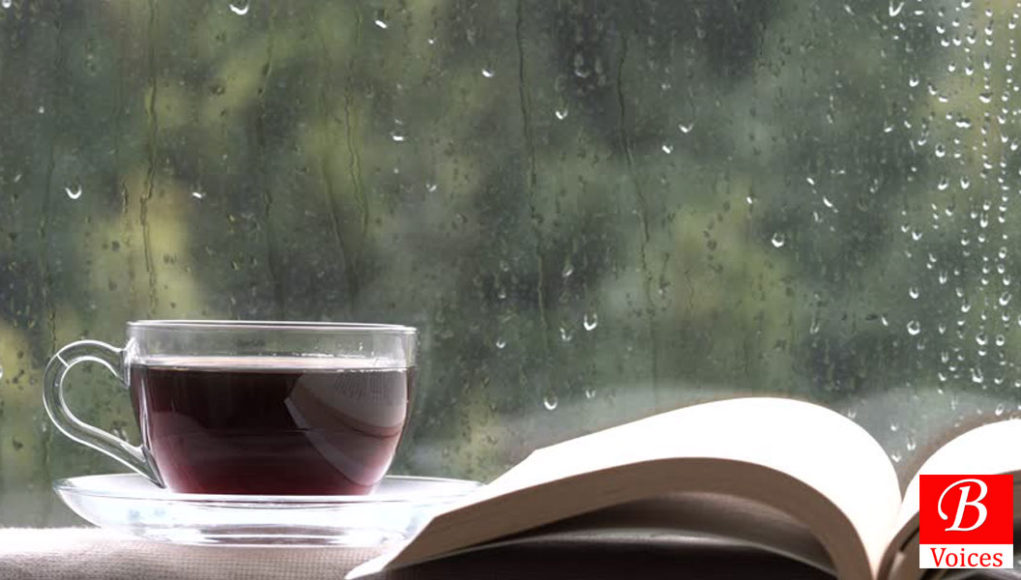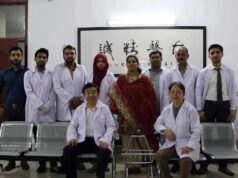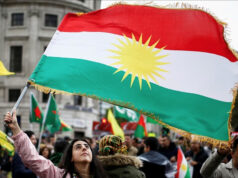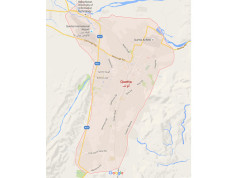Dervaish Ali
The scene: Quetta in January. Cold. Freezing cold! It’s early Sunday morning—another bleak, January day. The pothole infested back lanes, off the main Toghi Road, are frozen and slippery. My friend Ibrahim and I, shivering non-stop and, using our gloved hands, perform the intermittent ritual of cupping our faces and ears and wiping our moist, leaky noses with the back of the same hands every few minutes as we stand and wait at the corner of Musa Jee Lane and Zonki Ram Road for Qadeer bhai to appear and open his rental library. Clad in the similar polyester LT jackets, or LT look-alike (fake) ones, and engaged in the same cupping-wiping ritual trying to keep warm, there are a few other boys, too, all of them waiting. Tucked under our arms, in the warmth of our armpits, are pairs of books that we have just read, the day before. I have two of the recent installments of Maut Ka Taaqqub series, and Ibrahim has his favorite, the Umro Ayyar books. We are waiting to get our hands on the next books in these two incredibly popular series. Qadeer bhai, a ridiculously quiet man with a trade-mark sad smile on his face, is a laid- back guy, a Quetta version of the “The Dude” Lebowski, minus the size. And he never shows up on time!
Quetta in the late 1970s and early 1980s had many of these small rental libraries. Most, if not every, mohalla, or neighborhood, had one. Our favorite was the Qadeer (Rental) Library. It was behind the old Delight Cinema (now demolished to make way for a new shopping mall, I am told), on one of the side streets, off the main Toghi Road. The usual overnight rent for a fiction book was eight ana (50 paisa) in those days, which went up to a rupee in the later years. Hot or popular books, like the ones in the Umro Ayyar and Amir Hamza series, Tarzan series, Imran series, Inspector Jamshed, Inspector Kamran Mirza and especially Maut Kaa Taaqub series had long waiting lines. While I also read books from most of the other ones, my favorite was the 50-part Maut ka Taaqqub series (The Chase of Death or Death Chase). I was too fascinated with the three main characters in the story: Umber, Naag and Maria, all of them with super-human powers, both physical and intellectual. To give the reader a sense of this fascination, for many of us these books were like H.G. Wells, C.S. Lewis, J.K Rowling, J.R.R. Tolkien, Robert Ludlum and Stephen King all rolled into one super-adventure-cum-horror-cum-fantasy-cum-science-fiction. This is no exaggeration. After all, with nothing else to have a claim on our attention in those days—no video games, no computers, no smart phones or Internet and social media etc.—the books were the main source of entertainment (and “infotainment”) for the youth, especially in the cold winters.
Yes, there was TV, and cinema, too. But they were nothing like what we have today with unlimited number of on-demand channels providing programs on and about everything under the sun. TV had limited shows and hours. There were only two channels, one national, PTV, and a local channel, with only a few shows for children. Cinema was a once-in-a-blue moon affair for many of us, depending on the movies and the mood of the parent, usually the father.
The MTV age arrived with an AV (audio-visual) bang, and probably the very first video song played on it was The Buggles’ chart topper, an extended jingle actually, titled “Video Killed the Radio Song”. Lots of other stuff followed, all of which re-defined entertainment. We know everything changed after that. Well, at least those of us old enough to have witnessed and experienced the phenomenon. In the realm of music, video may have killed the radio song, but I think what really killed the small rental libraries in Quetta was not so much TV or MTV and its clones, or not just the TV alone, but what connected to it: the VCR, or the Video Cassette Recorder and Bollywood movies. Both the hardware and the software, so to speak.
It all started with the Sony BetaMax machine which was very soon replaced by the ubiquitous industry standard, the VHS system. Actually, before these two, for a short while there was the Philips Video Player with bulky, brick size video tapes, three of which were needed to store a single two hour plus Bollywood movie. So primitive was this piece of European technology, or perhaps because it was designed solely for use in cold Europe, that a separate pedestal (portable) fan was needed for preventing it from overheating as it played the latest Bollywood blockbusters! With the arrival of the VCR, it seemed that we had permanently moved on from the universe of the printed word to the age of the moving images with full stereo sound and I am not sure if that move was a real progress for us.
It was Amitabh Bachchan, Rajesh Khanna, Dharmendra, Zeenat Aman, Rekha, Rakhi, Rishi Kapoor, Shashi Kaporr, Hema Malini, Neethu Singh, Shatrugan Sinha, Amjad Khan, Pran, Danny and a host of others that killed these libraries, to use the apt word from the MTV song. Soon after the VCR became cheap enough to possess, and along with the TV, became a must-have item for families, these rental libraries were replaced with video shops. At one point in early / mid 1980s, there were at least ten of them on the main Toghi Road alone. They were everywhere in the city, the famous ones with huge collection of movies being on Shawak Shah Road and Abdus Sattar Road. While at many homes the bookshelves made way for fancy TV-VCR combo cabinets fully equipped with theatre quality sound systems, in the neighborhoods the rental libraries vanished, one by one. If I am recalling correctly, Qadeer Bhai’s library closed down in or around 1984. Like his old book sanctuary, he also vanished.
The Roman orator-statesman-philosopher Marcus Tullius Cicero has said, “A room without books is like a body without a soul.’ Books have always been at the center of great civilizations, at the core of their great cultural achievements in the form of arts, sciences, discoveries and inventions. For example, Islamic civilization during its more than half millennium rule of glory was the envy of the world. Among other things, it was especially known for the books it relentlessly churned out in all major fields of knowledge, from astronomy to mathematics, to philosophy and medicine. It was able to do so because Muslims, as the followers of the last monotheistic religion, the last “people of the book,” knew then the importance of books. After all, The Holy Quran, The Mother of All Books (Ummul Kitab), was at the heart of their faith, the very definition of their deen. They knew very well the deep significance of that fact, the centrality of The Holy Book for them as people of faith. Its deep and all-encompassing symbolism was never lost on them. Since in Islam the Word of Allah was made into book, into The Book, how could a Muslim not be a producer, reader and a lover of books?
Such is not the case today, alas. Today, the annual number of books produced in the entire Islamic world is less than what a small country in Europe produces. The 57 countries in the Organization of Islamic Conference (OIC) spend a mere 0.81 % of their annual GDP on research and development, out of which comes the publications. The situation is even worse in the Arab-Muslim world. For example, in 2005, Harvard University produced more scientific papers than 17 Arabic-speaking countries combined. As the recent UN Arab Human Development Reports have noted, the total number of books translated into Arabic in the last 1000 years is fewer than those translated into Spanish in one year! The Arab potentates of today are better known for publicly hanging and chopping up writers, bloggers and dissenters and not for their humane and valuable contributions to the knowledge and cultural pool of humanity. In short, books are no longer central to the civilization of Sina, Farabi, Ghazzali, Rushd, Razi, Arabi, Khayyam, Khaldun, Suharwardi, Tusi, Sadra and other luminaries of the Islamic past.
I don’t know about my friend Ibrahim, but the books from Qadeer Bhai’s library, the pulp fiction that we had at home, all bought at book stores like Book Land and The Quetta Bookstall on Jinnah Road, and my father’s monthly Suspense, Jasoosi and Ibn e Safi digests did great wonders for me. They instilled in me not only the habit of reading regularly but also a love of books, a passion that has grown more intense over the years. There aren’t many things in this world that can bring me the kind of deep joy I experience from reading a good book on a cold, rainy day. Many of us are now quickly becoming alienated from experiencing that kind of joy, the calm satisfaction that often comes from doing things that are slow, demanding, time-consuming or what we now routinely refer to as “inconvenient” for us in all sorts of ways, especially for those of us who happily withdraw en masse into the wordless, paperless, image-based universe of digital technologies. I believe the writer Ray Bradbury was onto something when he wrote the following: “You don’t have to burn books to destroy a culture. Just get people to stop reading them.”
Disclaimer: Views expressed in this article are those of the author and Balochistan Voices not necessarily agrees with them.
Share your comments!









